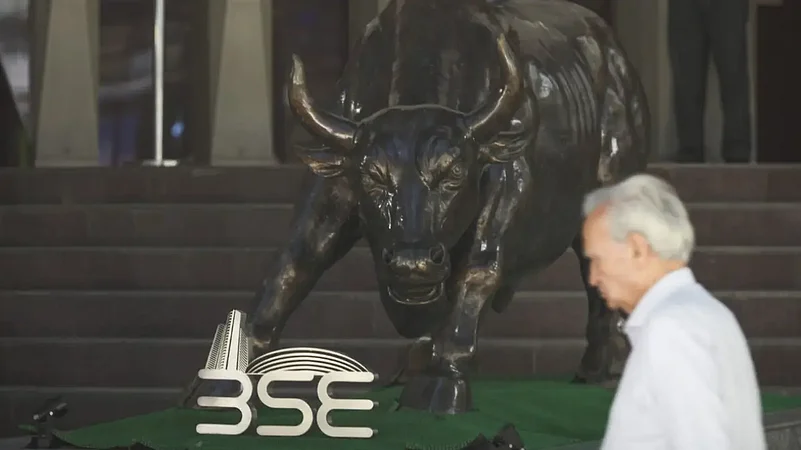So far this month, foreign institutional investors (FIIs) have purchased Indian shares worth Rs 46,893 crore, data from NSDL showed. With that, it is abundantly clear that the FIIs are back in Indian markets after dumping Indian shares for eight months in a row starting October last year.
The FIIs turned net buyers in Indian equities in July this year, a month after they sold shares worth Rs 50,203 crore in June.
The return of the foreign investors has also coincided with the Nifty 50 index staging its fastest rebound in nearly two decades. Following an intraday high of 17,992 that it achieved on August 19, the index surged 18.5 per cent from a low of 15,183 it hit on June 17, data from the National Stock Exchange showed. According to Bloomberg, this has been the fastest rebound in the Indian market since 2003.
Advertisement
“The recent move in the index indicates consolidation after the phenomenal gains and we expect the trend to continue,” says Ajit Mishra, vice president-research, Religare Broking.
A sharp surge since the June lows has also ignited a feeling among the FIIs that they have missed out on the opportunity of investing in India and they are buying shares aggressively now, analysts say.
Turn of the Tide
Between October 2021 and June 2022, FIIs sold a mammoth Rs 2.46 lakh crore in the Indian equity markets. Domestic investors bought over $30 billion worth of stocks in the first half of the year, which helped to prop up the market. But the overseas investors have slowly started picking up the baton recently on hopes that Indian companies will deliver stronger earnings and that a fall in crude oil prices will help narrow the country's current account deficit, news agency Reuters reported.
Advertisement
For the FIIs, the shift from record outflows to turning into net buyers came amid the weakening of the dollar and commodity prices cooling off faster than expected. Commodities, including oil and base metals, have dropped 10-20 per cent from the peak levels in June, providing a major relief to net importers like India, Bloomberg reported.
The price of crude oil, which is used as raw material by many industries, has come down to around $90 per barrel after hitting a high of $139 when the war began on supply concerns following the Russia-Ukraine war. The sharp drop in commodity and oil prices in international markets has helped bring down the cost of raw materials for companies.
Domestically, there are expectations of a strong consumption demand in the wake of the upcoming festive season which is also likely to boost earnings going ahead and the next two quarters for Indian companies will be very good, says market expert Vijay Chopra of Enoch Ventures.
According to Refinitiv data, India's large and mid-cap companies' net profits are expected to grow by 18.9 per cent in 2023, the highest in Asia. This is also being cited as a reason for FIIs’ return to India.
Cheap valuations and hopes of less monetary tightening going ahead are some other factors luring foreign investors towards Indian equities again. Fears of recession have raised hopes that central banks will dial back or even halt the rate hikes to avert a slowdown. In the minutes of their July meeting released last week, the US Fed officials indicated that they would adopt a less aggressive stance if inflation starts to recede.
Advertisement
Analysts expect the return of foreign money into Indian equity and bond markets to help the rupee find some reprieve after it slumped over 6.7 per cent against the dollar this year.















 Just one email a week
Just one email a week